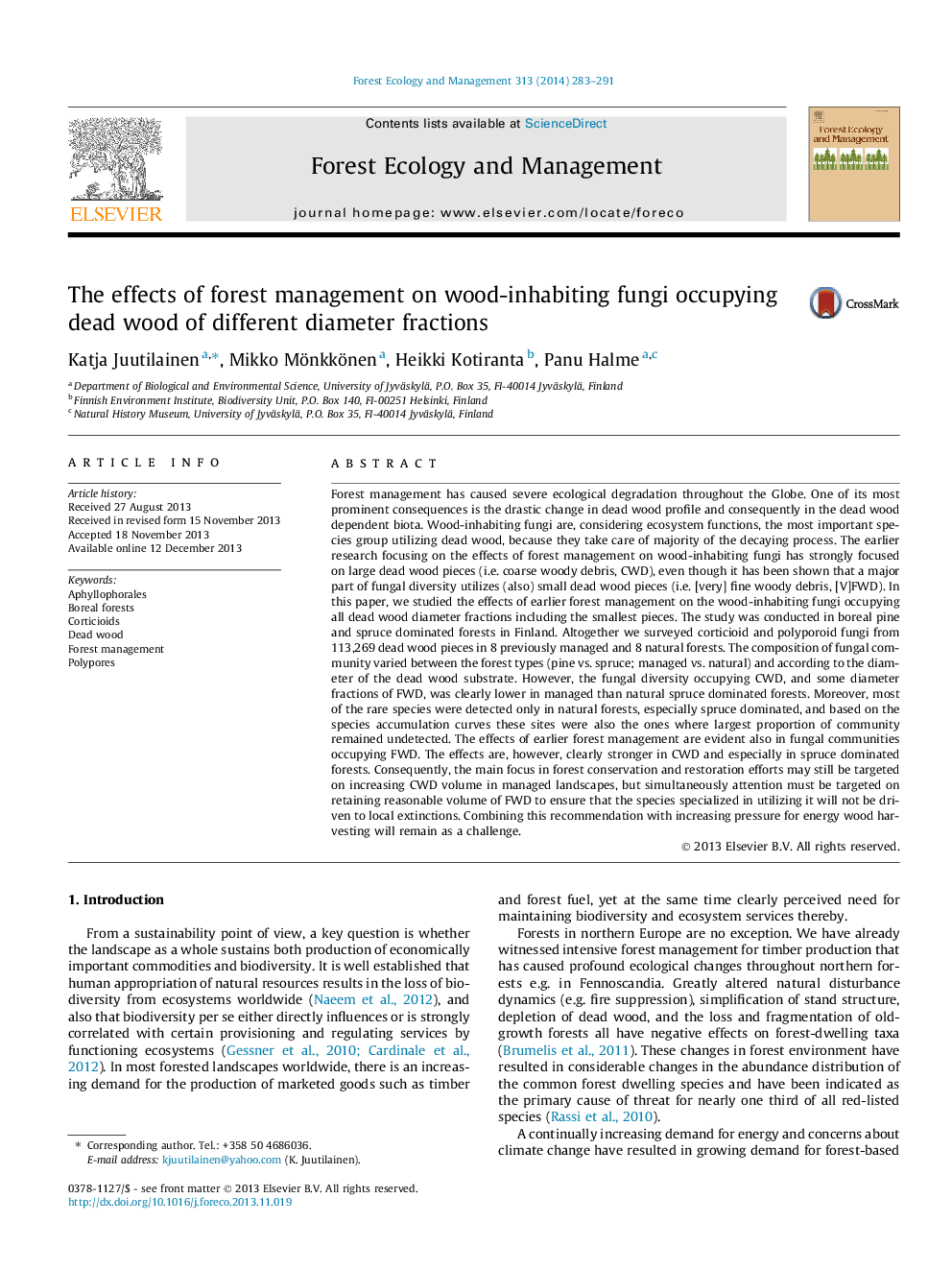| کد مقاله | کد نشریه | سال انتشار | مقاله انگلیسی | نسخه تمام متن |
|---|---|---|---|---|
| 86603 | 159199 | 2014 | 9 صفحه PDF | دانلود رایگان |
• Effects of forest management on wood-inhabiting fungi was studied at 16 forest sites.
• Corticioid and polyporoid fungi was surveyed from 113,269 dead wood pieces.
• Study included even the smallest dead wood diameter fractions.
• Fungal communities differed among forest types and substrate diameter categories.
• Natural spruce forests were the most species rich and hosted most rare species.
Forest management has caused severe ecological degradation throughout the Globe. One of its most prominent consequences is the drastic change in dead wood profile and consequently in the dead wood dependent biota. Wood-inhabiting fungi are, considering ecosystem functions, the most important species group utilizing dead wood, because they take care of majority of the decaying process. The earlier research focusing on the effects of forest management on wood-inhabiting fungi has strongly focused on large dead wood pieces (i.e. coarse woody debris, CWD), even though it has been shown that a major part of fungal diversity utilizes (also) small dead wood pieces (i.e. [very] fine woody debris, [V]FWD). In this paper, we studied the effects of earlier forest management on the wood-inhabiting fungi occupying all dead wood diameter fractions including the smallest pieces. The study was conducted in boreal pine and spruce dominated forests in Finland. Altogether we surveyed corticioid and polyporoid fungi from 113,269 dead wood pieces in 8 previously managed and 8 natural forests. The composition of fungal community varied between the forest types (pine vs. spruce; managed vs. natural) and according to the diameter of the dead wood substrate. However, the fungal diversity occupying CWD, and some diameter fractions of FWD, was clearly lower in managed than natural spruce dominated forests. Moreover, most of the rare species were detected only in natural forests, especially spruce dominated, and based on the species accumulation curves these sites were also the ones where largest proportion of community remained undetected. The effects of earlier forest management are evident also in fungal communities occupying FWD. The effects are, however, clearly stronger in CWD and especially in spruce dominated forests. Consequently, the main focus in forest conservation and restoration efforts may still be targeted on increasing CWD volume in managed landscapes, but simultaneously attention must be targeted on retaining reasonable volume of FWD to ensure that the species specialized in utilizing it will not be driven to local extinctions. Combining this recommendation with increasing pressure for energy wood harvesting will remain as a challenge.
Journal: Forest Ecology and Management - Volume 313, 1 February 2014, Pages 283–291
